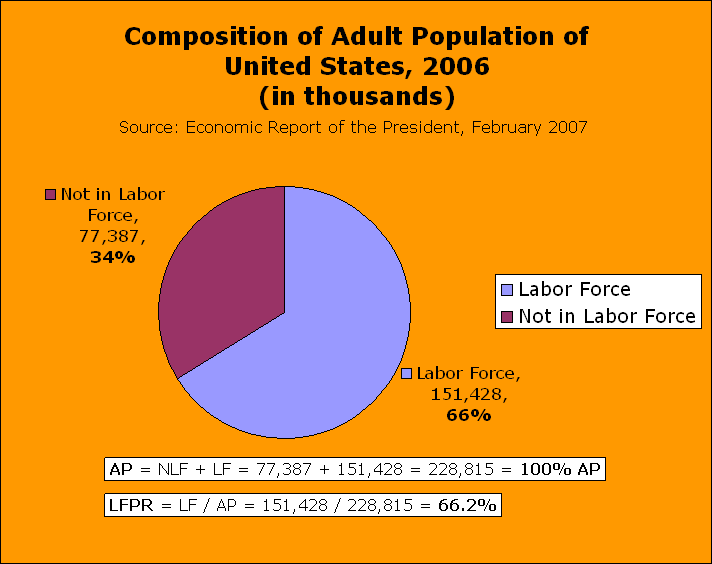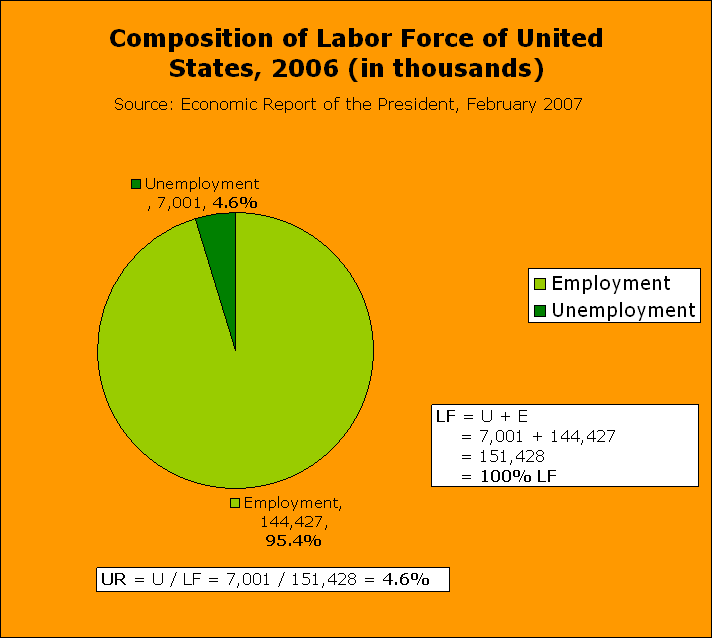 While many of us surely don’t appreciate it from a personal perspective, unemployment is unavoidable in any economy. However, it is not necessarily harmful. In a healthy economy, a certain degree of unemployment indicated as a percentage reflects the fact that there constantly are job seekers and employers voluntarily running after better opportunities for their own good.
While many of us surely don’t appreciate it from a personal perspective, unemployment is unavoidable in any economy. However, it is not necessarily harmful. In a healthy economy, a certain degree of unemployment indicated as a percentage reflects the fact that there constantly are job seekers and employers voluntarily running after better opportunities for their own good.
For example, a senior software engineer thinks that he deserves more with his advanced knowledge and productive skills, therefore decides to take on a transitional period of a month as unemployed so as to look for a better job.
In this article, you will familiarize yourself with:
- The concept of unemployment.
- The types of unemployment.
- The measurement of unemployment.
- The costs of unemployment.
What is unemployment anyway?
Quick facts
- Unemployment is lack of full utilization of resources, and eats up the production of the economy.
- Unemployment is highly and negatively correlated with the productivity of the economy.
- Unemployment management is one of the toughest jobs of every government in the world.
- Along with price level, unemployment is probably the most observable economic indicator that the general public complain about their government.
- Unemployment rate can be anywhere between 1% ~ 30% (beyond is very much unlikely), and a healthy economy is believed to have a unemployment rate around 5%.
- Unemployment rate is highest among young workers aged between 15 and 24.
In economics, unemployment refers to the condition of unwanted job losses, or willing workers without jobs. It’s as simple as that, only one thing you should pay attention that the willingness of the unemployed worker to be employed is the key to the idea. Therefore, not everyone who’s out of work is seen as unemployed. A person with a large fortune not looking a job is not counted in the unemployed population in that he is not willing to work in the first place, though he’s officially out of work.
Some key concepts to understand unemployment:
- Adult population – Part of the civilian population of individuals 16 years age and older, constituting the base for labor force participation rate calculation.
- Labor force – Individuals aged 16 years and older who are either working or actively looking for work. It’s part of the adult population in the economy, constituting base for unemployment rate calculation. Adults who are not actively looking for a job fall out of the group, such as discouraged workers, the retired and so forth. In other words, they are not labor force.
- Labor force participation rate – The ratio of labor force over adult population.
- Unemployment rate – The number of unemployed workers expressed as a percentage of the labor force. It could be anywhere between 1% ~ 30%, though 3% ~ 10% is the most common interval.
- Discouraged worker – People who have given up looking for jobs because of frustration, therefore not calculated in labor force.
What are the types of unemployment?
There are essentially 4 types of unemployment, namely frictional unemployment, structural unemployment, seasonal unemployment and cyclical unemployment, which respectively states the reason behind each type of unemployment and the paradox that job vacancies and unemployment always coexist.
- Frictional unemployment – Just as friction always takes place before the slider comes to its final position on the surface, people need time to find the best job, thus voluntarily rubbing back and forth between choices and staying unemployed. It’s the same with employers who rarely hire the first applicant that enters the door. Both of them, the job applicants and employers need time to explore the labor force market. Therefore, frictional unemployment is a type of voluntary unemployment that arises because of the time needed to match job seekers with job openings.A good example is that when you make up your mind and set off looking for a better job and abandoning the current one, you are in the frictional unemployment labor force.
- Structural unemployment – This happens when a large amount of unemployed workers (labor force supply) don’t qualify for a large amount of labor force demand. It’s either because that the workers don’t have the skills demanded by the employers or they live too far from the demanding area. Thus, unemployment caused by massive mismatch of skills or geographic location is noted as structural unemployment. Major shifts of consumption taste, technological change, tax and a variety of other factors can reduce the demand for certain skills and increase that of others, thus making structural unemployment occur.
Note
While frictional unemployment is short-term and mostly voluntary, structural unemployment poses more of a problem because workers must seek jobs elsewhere or must develop the skills demanded. The process is full of pain and frustration, and may lead to negative impacts on society.
- Seasonal unemployment – In some markets, the demand for goods and services may expectedly fluctuate fiercely with seasons in a year, incurring waves of demand for related labor force. As the season of Christmas comes, demand for postal services rise sharply so is postal workers because the workload is much bigger than that of any seasons else in the year. After that, demand for postal service drops to normal and so does demand for postal workers, bringing about unemployment.So, unemployment caused by seasonal changes in labor supply and demand during the year is called seasonal unemployment.
- Cyclical unemployment – Because of business cycles, many firms reduce the demand for inputs, including labor in recessional periods when production declines. Cyclical unemployment is used to refer to the fluctuation in unemployment that is incurred by business cycles, more specifically, the unemployment caused by economic recessions.Cyclical unemployment can be zero in full expansions during a business cycle. For example, between 1942 and 1945, when the entire America is much too busy producing weaponary for WWII, business cycle arrived at an inflated expansion, thereby cyclical unemployment actually drops to zero, resulting in an average 1.6% unemployment rate during those good years.
How shall we measure unemployment?
Macroeconomic unemployment is typically measured and comes to be known repeatedly as unemployment rate. But what exactly is unemployment rate? How is it measure?
The unemployment rate (UR) expresses the number of people unemployed as a percentage of the labor force (LF).
With labor force (LF) comprising of all unemployed (U) and employed (E) people, that is,
LF = U + E
we have unemployment rate or UR, expressed as
UR = U / LF * 100%
In a case of 100,000 people in the labor force and 10,000 of whom are unemployed (lost jobs and actively seeking one), the unemployment rate would be calculated as
UR = U / LF * 100% = 10,000 / 100,000 * 100% = 10%
In addition to labor, land and capital can also be unemployed. With a little common sense, we would expect that a high unemployment rate of labor would result in a low level of utilization of capital, land and other forms of production factors, simply because men are the operators that make these things work for the economy and produce economic value. If more men are laid off their work, more resources are left to rot rather than utilized in production.
In case you are confused with concepts like labor force, not in labor force, employed or unemployed used in this section, please refer back to the beginning section What is unemployment anyway? for clarification. And if there’s no problem we will have a look at the compositions of both the adult population and the labor force of United States in 2006 below to have a better grip of where unemployment stands in the economy. (graphs exported from Microsoft Excel 2003)

Composition of Adult Population of United States, 2006 (in thousands)

Composition of Labor Force of United States, 2006 (in thousands)
You may want to calculate the UR (Unemployment Rate) and LFPR (Labor Force Participation Rate) yourself with figures present in the above graphs.
How unemployment harms our daily lives and the economy?
Quotes
It’s a recession when your neighbor loses his job; it’s a depression when you lose your own.
~Harry S. Truman
Hunger is not the worst feature of unemployment; idleness is.
~William E. Barrett
The hardest work in the world is being out of work.
~Whitney Young, Jr.
Simple with this one. Lost of income for individuals and outputs for economy would come up first as the costs of unemployment.
For individuals and households, unemployment forces them to curtail their consumption drastically and perhaps liquidate some of the assets – often at a loss – to meet financial obligations. All these have negative impact on the whole economy.
For economy as a whole, unemployment reduces the output of goods and services that could otherwise have been produced by unemployed labor force. An economy is producing substantially below its potential if unemployment rate is extremely high, thus everybody in the society loses by consuming and enjoying less because less is produced for distribution.
The economic loss caused by unemployment can be measured as a loss in aggregate supply (total output) or aggregate demand (total income), more specifically, the difference of potential GDP minus actual GDP.
Costs are not always economic, though, and it’s true. In non-economic aspects, unemployed individuals might be very much discouraged for their inability to secure jobs, and the feelings of frustration and dismay usually lead to anti-social activities: indulgence, theft, violence, sabotage and other forms of crime, which would pose serious problems especially if the unemployment rate is unbearable.
Unemployment ruins family happiness also: quarrel, fight, divorce, children losing their education and good health that would have an enduring effect over their lives. The misery and suffering cannot be measured by economic statistics, but they significant and as real as it gets.






Comments 2